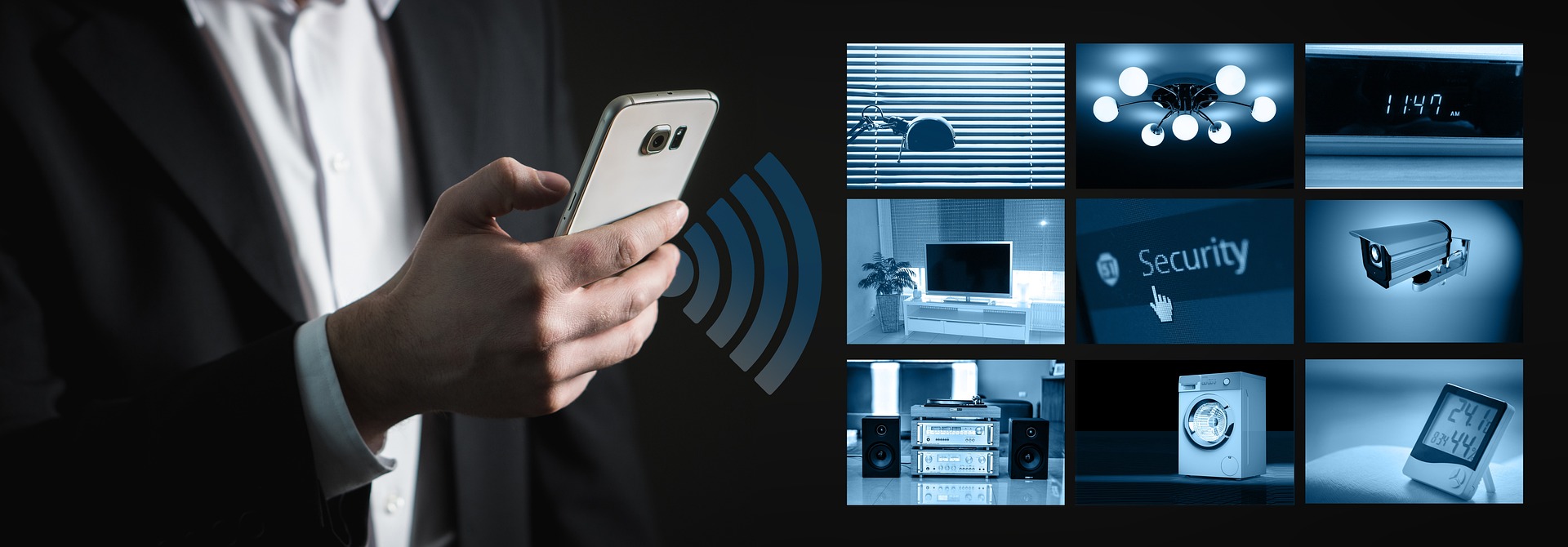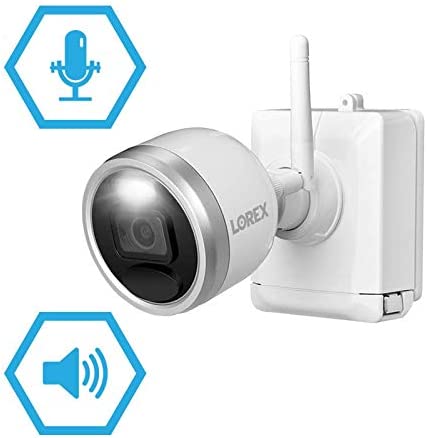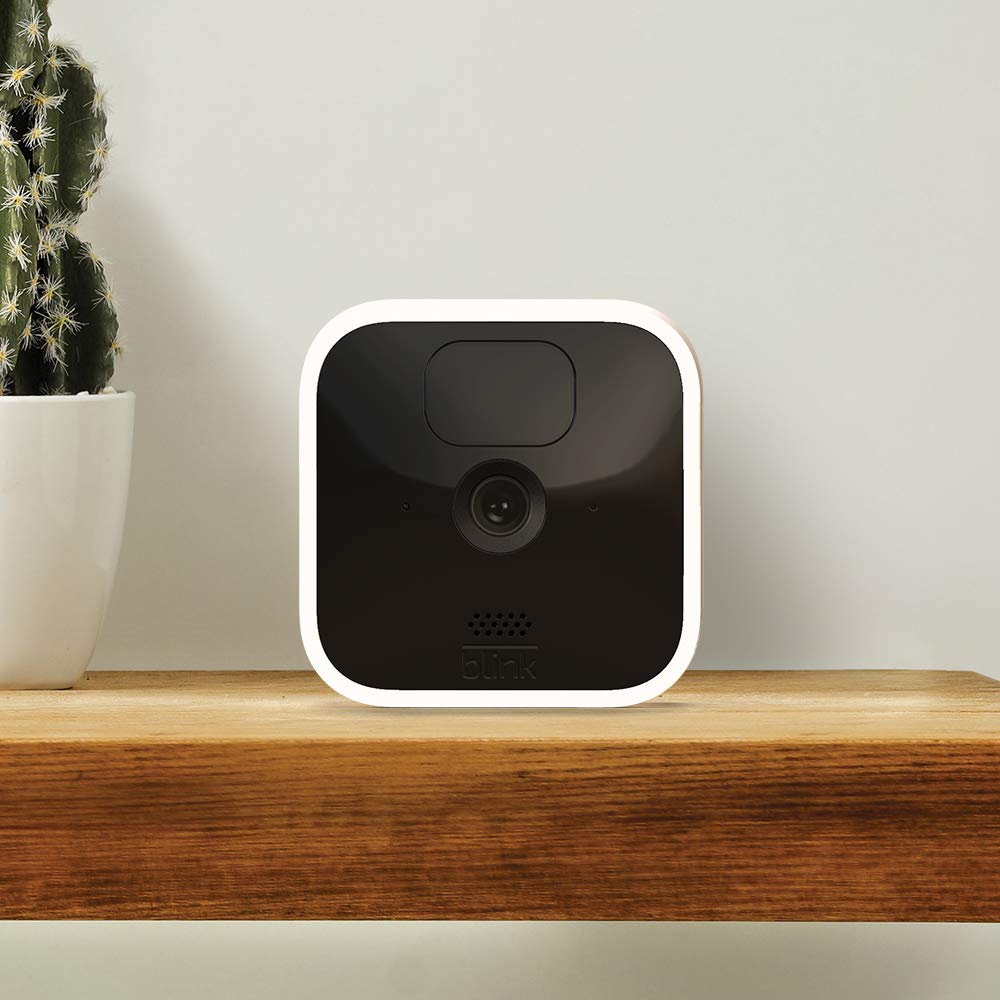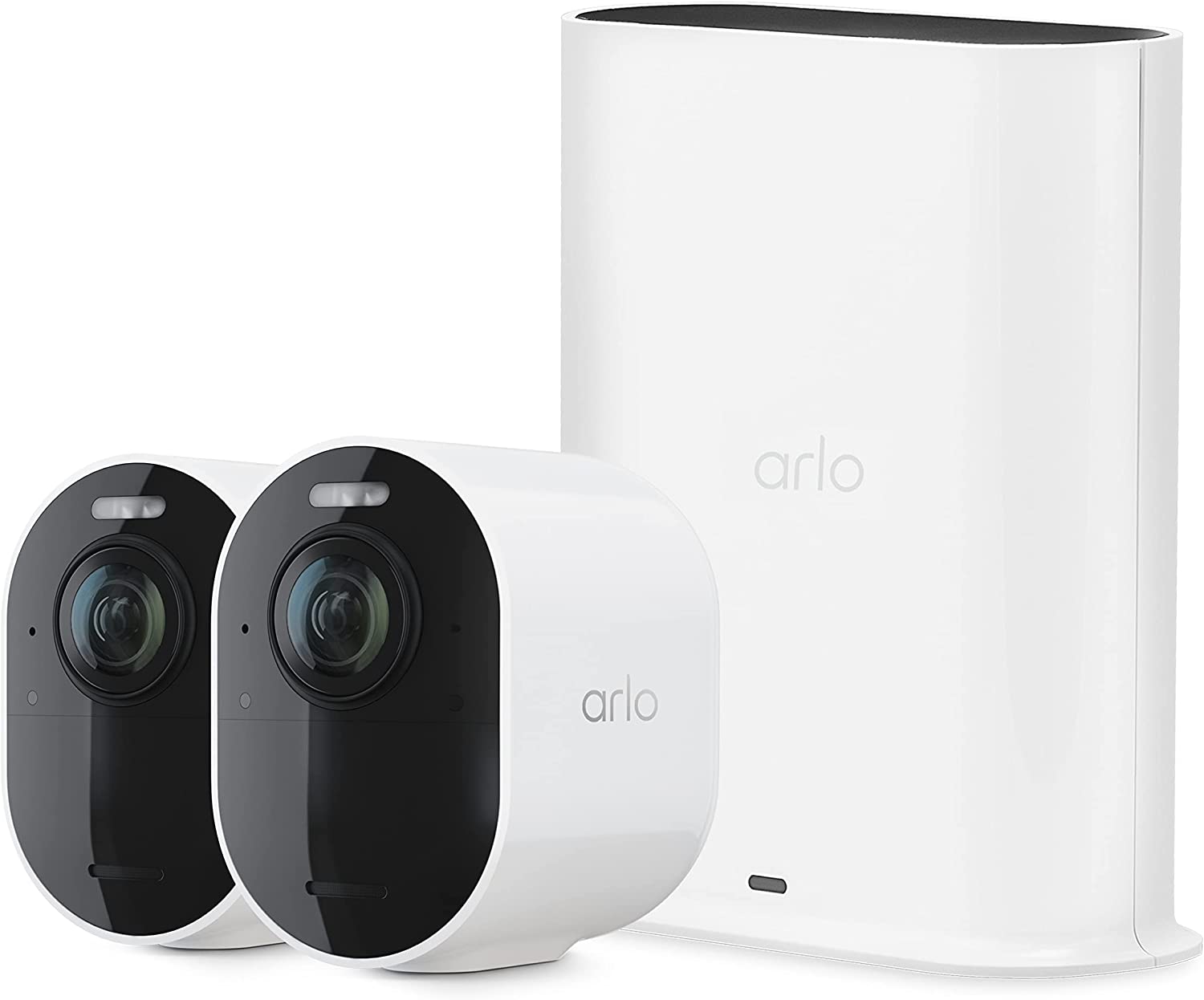
A home security camera system is a system of cameras that are installed in and around a home for the purpose of providing surveillance and security. These cameras can be connected to a digital video recorder (DVR) or a network video recorder (NVR) that allows you to record and store footage, or they can be connected to a live feed that you can view on your smartphone or computer.
Some home security camera systems also come with additional features such as motion detection, night vision, and two-way audio, which allow you to communicate with people or pets through the camera.
These systems can be wired, wireless, or a combination of both, and can be set up to trigger alerts or notifications when certain events or movements are detected.
Our Home security Camera System Favorites
There are many security camera systems to choose from. This is our list of Top IP cameras that are wireless although many of these manufacturers have wired options, for this article we will be focusing on the wireless models.
Lorex Indoor/Outdoor Wireless Security Camera System
This product has been available since 2020 and is a nice entry level camera system. It comes with everything needed to setup and functions without having to sign up for a monitoring service.
Features:
- IR Night Vision - See up to 60ft in the dark
- Person Detection - Notification of when motion of a person it detected.
- LED Warning Light - Activates bright light when motion is detected at night.
- Remote Triggered Siren - Remotely activate a siren to startle intruders.
- Two-way Talk - via a speaker and microphone use to communicate with people on the property.
- Easy Installation - Wireless setup allows for flexibility on where to install.

Pros
Cons
We liked this unit because the cameras were well made, and the installation wasn't too difficult. If this is your first foray into the security camera arena this isn't a bad choice. The buggy software and some of the limitations of being able to control simple details like disabling the light and camera for areas where you might be working, and the restriction of the antenna being attached to the recording device may be enough to drop this camera of your short list. But for a basic unit it provides basic monitoring.
Blink Outdoor and Indoor – wireless, HD security cameras
This camera system comes with 3 indoor cameras and 3 outdoor cameras as well as a sync module, allowing for indoor and outdoor monitoring.
Features:
- Long Battery Life - Uses 2 AA lithium Batteries
- Motion Detection - Customizable notification of when motion of an object it detected.
- Works With Alexa - Activate and interact using an Alexa interface.
- Two Types of Cameras - System comes with both indoor and outdoor cameras.
- Two-way Talk - via a speaker and microphone use to communicate with people on the property.
- Easy Installation - Wireless setup allows for flexibility on where to install.

Pros
Cons
This is a solid system ideal for first time security system purchasers. The setup is very simple and straight forward. This is what sets this system apart from some similar products.
Minor issues encountered:
- We did run into an issue where we thought we didn't receive the sync module, however we found it in the outdoor camera box.
- Challenges with night vision, these cameras are easily affected by surrounding light at night.
- Static on the sound, it can be corrected by putting foam over the mic, but in our opinion, this should be something the company thought of and included it as part of the product.
Despite these issues, we liked the longer battery life (which is still affected by how often you run the camera) and how easy the system is to setup. If this is your first unit you are purchasing it would make the short list for sure.
Arlo Ultra 2 Spotlight Camera - 2 Camera Security System
Arlo's security camera system comes comes with 2 outdoor cameras and a recording base. This is a nice system for someone who just wants to monitor outdoors.
Features:
- Two Way Audio - Speak with anyone on the property via the microphone and speaker
- Motion Detection - Camera zooms and tracks moving objects.
- Works Voice Activation - Activate and interact using Alexa, Google Home, Apple Homekit, SmartThings
- Color Night Vision - See detailed images at night with color night vision.
- Two-way Talk - via a speaker and microphone use to communicate with people on the property.
- Easy Installation - Wireless setup allows for flexibility on where to install.

Pros
Cons
The images for this system are outstanding, in daylight. We had hoped that the night vision with color would hold up to its hype. If the image is close to the camera 10-15 feet and stays long enough for the lighting to kick in and the color recording to work, it is as advertised. But many objects don't stay still long enough to take advantage of this.
What we liked:
- As previously stated, the 4k daylight images are very good and deliver as advertised.
- The spotlight on the cameras is configurable and you can disable it for zones that you don't want to have the spotlight.
- Sound quality is really good on the cameras and the ability to negate the effect of wind works well.
- The ability to add other models of Arlo Cameras to the system is also a plus.
- Even though the battery life was an issue on a couple of cameras that had more traffic, we found that the solar option (sold separately) worked pretty well and solved the issue in our testing.
All in all, we liked the cameras as well as the setup making this one of the models, we would consider on our short list of wireless camera systems.
Best Home Security Camera System - Who should own one?
There is no one-size-fits-all answer to this question, as different people have different needs and circumstances. Some people may decide to install a home security camera system for a variety of reasons, such as to deter burglaries, protect their property, or monitor their home while they are away. Others may choose to install a security camera system for more personal reasons, such as to keep an eye on their children or pets, or to monitor the elderly or disabled.
In general, anyone who is concerned about the security of their home and family may consider installing a home security camera system. This could include homeowners, renters, or landlords. It is important to note, however, that there are laws and regulations that govern the use of security cameras in certain areas, so it is always a good idea to familiarize yourself with these rules before installing a security camera system.
Wireless Security Camera Considerations
While wireless cameras offer the advantage of flexible placement, lack of need to wire everything, and ease of installation, there are some disadvantages that should be considered when making your decision on wireless systems. Taking these items in consideration will ensure you go into your purchase with realistic expectations. The is also an option of wireless security cameras that connect directly to your Wi-Fi without a hub.
- Limited range: Wireless cameras rely on a wireless connection to transmit video and audio signals to the device or system that is recording or displaying the footage. This means that the range of the wireless connection will be limited, and the camera may not be able to transmit a signal over long distances or through thick walls or other obstructions.
- Interference: Wireless cameras can be prone to interference from other wireless devices, such as cell phones, wireless routers, and other electronic devices. This can cause disruptions in the video or audio signals and result in poor quality footage.
- Battery life: Many wireless cameras rely on battery power, which means that they will need to be recharged or replaced on a regular basis. This can be a hassle and may not be practical for long-term use. If you go wireless you should also see if there is a capability to get power via solar or another power source. This way you can avoid having to change the entire system if you find chore of charging batteries to not work for your situation.
- Security: Wireless cameras are vulnerable to hacking and other security threats, as the wireless connection can potentially be intercepted by unauthorized individuals.
- Cost: Wireless cameras can be more expensive than wired cameras, as they require additional hardware and technology to transmit the video and audio signals wirelessly.
How many security Cameras should I get?
There are a few factors to consider when determining how many security cameras you need:
- The size of the area you want to monitor: The larger the area, the more cameras you will need to cover all the angles.
- The level of security you want: If you are looking to deter potential burglars, you may only need a few cameras in strategic locations. If you want to be able to identify individuals and capture detailed footage, you may need more cameras.
- Your budget: The number of cameras you can afford will also influence your decision.
- The purpose of the security cameras: Are the cameras for general surveillance, to monitor specific areas (such as entrances or exits), or to capture specific events (such as package deliveries)?
Here are some general guidelines for determining how many cameras you may need:
- For a small retail store, home or office: 2-4 cameras
- For a medium-sized retail store, home or office: 4-8 cameras
- For a large retail store, home or office: 8+ cameras
Keep in mind that these are just rough estimates and the actual number of cameras you need will depend on the specific needs and layout of your location. It may also be helpful to consult with a security expert or a professional installation company to determine the best coverage for your specific needs.
Key Features of a Home Security Camera System
Key features to consider when looking for a home security camera system:
- Video Quality: High-resolution cameras with a wide field of view can provide clear and detailed footage.
- Night Vision: Infrared or thermal imaging cameras can capture footage in low light conditions.
- Motion Detection: Sensors can trigger an alert or recording when movement is detected.
- Two-Way Audio: Allows you to communicate with people or pets through the camera.
- Cloud Storage: Allows you to store and access footage remotely.
- Remote Viewing: Allows you to access and control the camera system from your smartphone or computer.
- Compatibility: Check to see if the camera system is compatible with your home network and devices.
- Installation: Consider the ease of installation and whether you will need professional installation or if you can do it yourself.
- Price: Determine your budget and look for a camera system that meets your needs within that budget.
- Customer Support: Look for a camera system with good customer support in case you have any issues or questions.
Video Quality
Security camera video quality refers to the clarity and resolution of the footage that is captured by the camera. Higher video quality means that the footage will be more detailed and easier to see, while lower video quality will result in footage that is less clear and more difficult to make out.
There are a few factors that can affect the video quality of a security camera, including the camera's resolution, frame rate, and bit rate. The resolution of the camera refers to the number of pixels that make up the image, with higher resolutions producing clearer and more detailed footage.
The frame rate is the number of frames per second that the camera can capture, with higher frame rates producing smoother and more realistic footage. The bit rate is the amount of data that is used to transmit the video, with higher bit rates resulting in higher quality footage but also larger file sizes.
Night Vision
Security camera night vision is a feature that allows a camera to capture footage in low light or complete darkness. This is typically accomplished through the use of infrared (IR) or thermal imaging technology.
Infrared (IR) cameras use IR LEDs to emit a beam of light that is not visible to the human eye. This beam of light bounces off of objects and surfaces and is picked up by the camera, allowing it to capture footage in low light conditions. IR cameras are typically able to capture footage in complete darkness, as long as there is some ambient light present.
Thermal imaging cameras use a sensor to detect the heat that is emitted by objects and surfaces, and they create an image based on these temperature differences. These cameras can detect heat signatures in complete darkness, and they are often used in security applications because they can detect the presence of people or animals even if they are hidden or camouflaged.
Night vision cameras are an important feature to consider when shopping for a security camera, as they allow you to capture footage even when it is dark outside. This can be especially useful for monitoring areas of your home that may be vulnerable to burglaries or other threats.
Motion Detection
Security camera system motion detection is a feature that allows a camera to detect movement and trigger an alert or recording. This can be useful for a variety of purposes, such as alerting you to the presence of an intruder or capturing footage of any activity that occurs on your property.
Motion detection works by using sensors to detect changes in the environment. When the camera detects movement, it can trigger an alert or start recording footage. Some camera systems allow you to customize the sensitivity of the motion detection, so you can adjust it to trigger only when certain types of movement are detected.
Motion detection can be a useful feature for a security camera system, as it allows you to monitor your home or property even when you are not there. It can also be used to conserve storage space, as the camera will only start recording when movement is detected. However, it is important to note that motion detection can also result in false alarms, so it is important to adjust the sensitivity and settings as needed to minimize false alarms.
Two-way Audio
Security camera system two-way audio is a feature that allows you to communicate with people or pets through the camera using a microphone and speaker. This can be useful in a variety of situations, such as talking to someone at the front door or checking in on your pets while you are away from home.
To use two-way audio, you will need a camera that has a built-in microphone and speaker, as well as a device (such as a smartphone or tablet) that allows you to access the camera's audio feed. You can then use the device to speak through the camera's microphone and hear responses through the camera's speaker.
Two-way audio can be a useful feature for a security camera system, as it allows you to communicate with people or pets while you are away from home. It can also be used as a
Remote viewing refers to the ability to access and view security camera footage from a remote location, typically over the internet. This can be done through the use of a computer, smartphone, or other device that has internet access and is connected to the security camera system.
Remote viewing is often used to monitor security cameras in real-time, allowing users to keep an eye on their property or premises from anywhere with an internet connection. Some security camera systems also offer features such as motion detection and alert notifications, which can notify users if there is activity on their cameras.
Remote viewing can be a useful tool for security and surveillance, as it allows users to monitor their property and respond to any potential threats or issues in real-time. It can also be used to check in on the property while the user is away, or to verify that everything is in order.
Final Thoughts on Wireless Security Camera System
After testing multiple brands, we found most of these camera systems came with everything you need to get setup. One thing to watch out for are the monthly fees while you can do minimal things with most of these systems, you will need to subscribe if you want to truly unlock all the features.
You may also want to look at just buying individual cameras that connect directly to the internet as an option over purchasing one of these systems. This will give you a lower entry price and allow you to try out the features before you go all in.
